Originally published on SoundStage! Xperience
Sony WH-1000XM2 earphones measurements can be found by clicking this link.
Based on what I’ve observed, the greatest challenge in headphone design isn’t building the world’s greatest audiophile headphones. It’s building really good noise-canceling headphones. Consider the challenges Sony faced in creating the WH-1000XM2 noise-canceling (NC) headphones ($349.99 USD). The engineer must deal not only with the incoming music signal, but also with the signals coming from one or two microphones in each earpiece, each mike separately filtered to compensate for its distance from the driver, and for the acoustical properties of the driver and enclosure. The response of the drivers must be tuned to compensate for the effects of NC on the headphones’ sound -- and they still have to sound reasonably good in passive mode, when the battery runs down. Then there’s the noise of the internal amps and microphones to worry about. Perhaps worst of all, I’m told that many of the key patents of this technology are still held and vigorously defended by Bose.
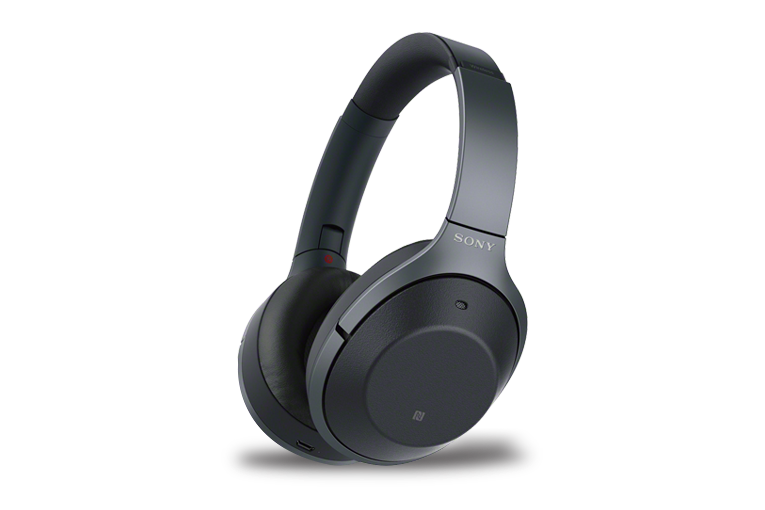
With the WH-1000XM2s, Sony attempts to hop these hurdles while offering a ton of cool features. Included is Bluetooth wireless in all its flavors, including AAC and the new aptX HD, which promises better sound quality if you have an aptX HD-compatible smartphone or tablet (of which, at the moment, there are few). Touch-sensitive controls on the right earpiece let you swipe to adjust volume, pause, restart playback, and skip to the next or previous track. Covering the right earpiece with your hand temporarily stops the NC.
There’s also a smartphone app that lets you tune the sound and adjust the level of NC. The app allows the WH-1000XM2s to tap the smartphone’s smarts to adjust the NC to suit the environment. By detecting motion, it knows if you’re walking, running, or riding in a car, and Sony claims it then adjusts the NC appropriately. By sensing barometric pressure, it can tell when you’re at high altitude in a plane, and tune the sound and the NC to suit. The app is optional; according to Sony, without the app, the NC can still optimize itself for the level of outside sound.
Even seemingly uninteresting components such as the battery got attention. Its maximum run time is specified as 30 hours, and if it does run down, a ten-minute recharge is claimed to give you 70 minutes of play.
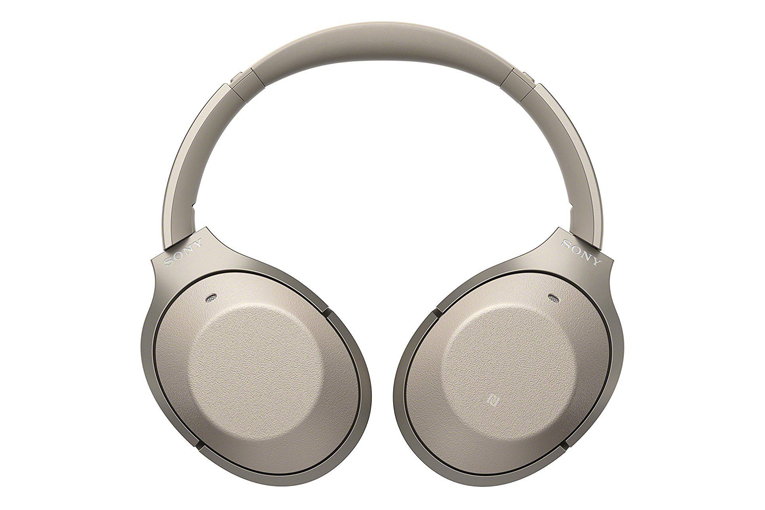
But of course, all the technical twists in the world don’t guarantee good sound. I was reminded of this a few years ago when I tried then-new Sony headphones touted as having the very latest digital signal-processing technology. I was thrilled to hear how, in passive mode, they sounded and measured almost exactly like the company’s renowned MDR-7506 -- but was crushed to then hear, when I turned on the NC, that they sounded like completely different, vastly inferior headphones.
In the box
As someone who travels three to four months of every year, I have a different perspective on NC headphones than do most reviewers, because I’m precisely the target market for these things. That’s why the feature of the WH-1000XM2s that most excites me is the carrying case. Smaller than most, and slim enough to fit pretty easily into my laptop bag, it measures 8” by 6.5” by 2.25” -- just slightly larger than the case for Bose’s QC35 II, which measures 8.5” by 5.75” by 2”. This is a big advantage for dedicated road warriors like me, who wouldn’t think of lugging around the football-shaped cases supplied with some NC ’phones.
Also in the box are a 5’ (1.5m) cable for wired use, an airplane adapter, and a USB charging cable.
Use
After the carrying case, the next most important feature for the business traveler is comfort -- you should be able to wear a set of headphones through most of a flight from LAX to JFK without requiring anything more than a few brief breaks to rub your ears. I didn’t have a chance to fly with the WH-1000XM2s, but I did spend most of a workday (about six hours) wearing them, with few breaks. Their clamping force was a bit stronger than that of the Bose QC35 IIs ($329.99), but the Sony’s earpads are a little thicker, and I felt the comfort was pretty close to that with the Boses, which are something of an industry standard for long-term comfort. The WH-1000XM2s are heavier, though, and they did tend to slide out of position pretty easily when I tilted my head far forward or back. No big deal.
Until now, I’d dismissed touch-sensitive play/pause/volume/track-skip controls on headphones as more gimmicks than useful features. I think the WH-1000XM2s are the first I’ve tried that gets these controls right. They aren’t too sensitive, and the surface is textured -- I didn’t find myself accidentally pausing play, skipping tracks, or cranking up the volume 20dB, as I have with many other headphones with touch-sensitive controls.
Other than these controls, the WH-1000XM2s have only two buttons: one for power, another to select the NC mode -- NC on and off, plus an ambient mode that admits external sounds. Unlike almost all other headphones that combine Bluetooth and NC, the WH-1000XM2s are easy to operate entirely by feel.
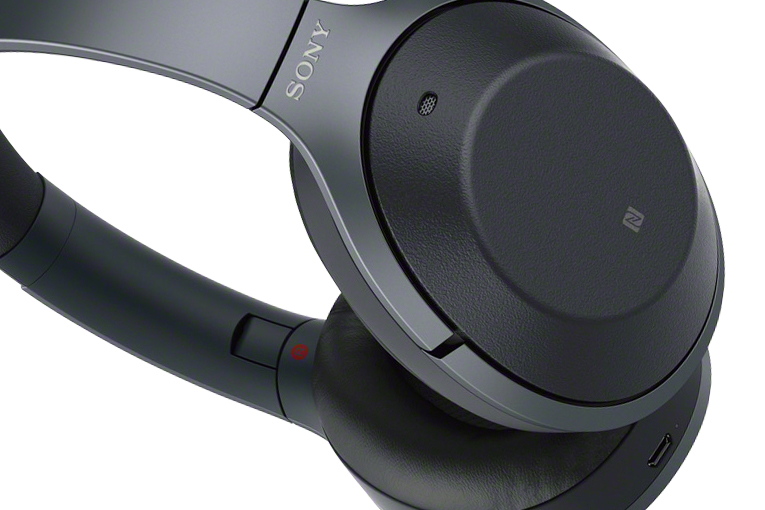
Even without using the app, the NC worked quite well. I tested it by playing airplane-cabin noise -- a mix of four different recordings I made during flights on planes ranging from a McDonnell Douglas MD-80 to a Boeing 777 -- through the four speakers and subwoofer I use for measuring headphones’ isolation properties. At their default setting, the WH-1000XM2s couldn’t quite match the Bose QC35 IIs’ ability to cancel out the jet engines’ low-frequency drone, but they seemed to come within a few dB. Other than the Bose, in this regard they outperformed the other over-ear NC headphones I had on hand.
For me, the Sonys didn’t produce the “eardrum suck” problem I have with my Bose QC25s. This weird feeling of pressure on the eardrums is kind of like what you get when you ride an express elevator of one of the tallest skyscrapers, and it’s part of the reason I don’t use the QC25s all that often. Given this model’s popularity, sufferers of eardrum suck are clearly in the minority, but I’m not the only one who’s complained about this.
I briefly tried Sony’s app but didn’t find it all that useful. I may have some bias here; I’ve tried many headphones and apps that claim to optimize NC for certain situations, but their utility is limited. As you can see from my many measurements of headphone isolation, NC is most effective up to only 1kHz or so; at higher frequencies, the physical isolation provided by the headphones themselves has a much bigger effect than active circuitry can. This means that there are only about three octaves within which an active NC system can be effectively tuned in the first place. I would argue, also, that active NC really isn’t needed for normal situations other than riding in an airplane; buses, subways, and cars just aren’t that noisy, and in those situations passive isolation gets the job done. That said, I did try walking near traffic with NC on (probably a really bad idea in the first place), just to see what effect the circuitry would have compared with sitting in my lab running airplane noise through speakers. It did seem to be making some adjustment, but in my opinion, it’s a solution in search of a problem.
Sound
I listened to the Sony WH-1000XM2s casually for a couple of days, just letting them run while I worked, so I could test their comfort and get a rough idea of their sound. I could tell just from casual listening to jazz stations on Internet Radio that they were at least above average in sound quality.
I began my serious listening with a tune I chose more for emotional than technical reasons: “The Usurper,” from To Mega Therion, by 1980s extreme-metal pioneers Celtic Frost (320kbps Ogg Vorbis, Sanctuary/Spotify). (The band’s primary bassist, Martin Eric Ain, had died just a few days before.) Like most of the Frost’s music, “The Usurper” is relentless, with thick, heavy guitar and bass parts propelled by hyperactive kick drum, all topped off by singer-guitarist Thomas Gabriel Warrior’s growled, guttural singing. For this reason, To Mega Therion actually makes a great test of closed-back headphones, whose characteristic bass resonance often makes such bands sound as muddy as Hellhammer, the notoriously inept band from which Celtic Frost sprang. Yet I could easily hear the subtleties (yes, there are some!) in “The Usurper”: the twang in the high notes in the guitar glissando that kicks off the tune, the precision of the snare-drum hits, the ride cymbal fighting for its place in the mix, the last notes of Warrior’s solo rising to the heavens on a reverb tail -- and, best of all, Ain’s simple but powerful notes filling out the bottom end of Warrior’s power chords.
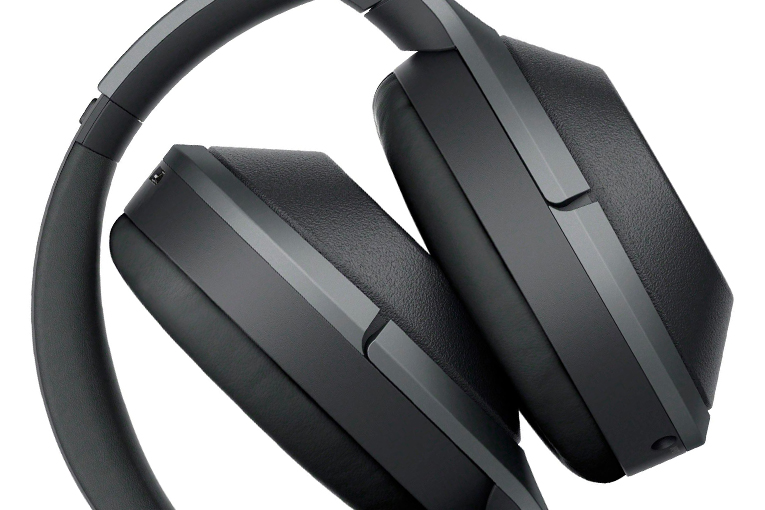
These days, I spend far more time listening to jazz than to extreme metal, so I figured I’d best switch to the title track of organist Jimmy Smith’s Back at the Chicken Shack (320kbps Ogg Vorbis, Blue Note/Spotify). The Sonys did a surprisingly nice job with this music, beautifully recorded in 1960 by the legendary Rudy Van Gelder. The overall sound was generally neutral, the instruments laid out naturally in virtual sonic space, with a particularly nice focus on Smith’s Hammond B-3 organ. Sure, my favorite open-back audiophile headphones would sound more detailed and spacious, but $350 closed-back models, even non-NC ones, rarely sound much better than this. The bass did sound slightly kicked up, but in a positive way -- it gave the music a bit of extra drive.
An even more natural spatial presentation can be heard in Cécile McLorin Salvant’s cover of Bob Merrill and Jule Styne’s “If a Girl Isn’t Pretty,” from her Dreams and Daggers (256kbps MP3, Mack Avenue), most of which was recorded live at New York City’s fabled jazz club the Village Vanguard. The ambience reproduced by the WH-1000XM2s reminded me very much of what attending a gig in a small, low-ceilinged club like the Vanguard really feels like. There were loads of detail and subtlety in the cymbals and hi-hat, and Salvant’s voice was exceptionally clear, especially considering that I was listening to a data-compressed MP3 through a smartphone and a pair of mass-market headphones. The notes of Paul Sikivie’s double bass were well defined in its upper two octaves, gradually blooming and expanding in the bottom octave -- just like the real thing. The only real flaws I heard were slight, fleeting bits of sibilance in Salvant’s voice -- but it was far less sibilance than most headphones produce.
I used several tracks, including “Things It Would Have Been Helpful to Know Before the Revolution,” from Father John Misty’s Pure Comedy (320kbps Ogg Vorbis, SubPop/Spotify), to compare the WH-1000XM2s with the Bose QC35 IIs and the Bowers & Wilkins PX ($399.99), both of which combine Bluetooth and NC. To my ears, the Bose and Sony models were both obviously better than the B&Ws, which had a coloration that made singers sound as if they were singing with their hands cupped around their mouths, as well as a lack of ambience and an unnatural, uneven reproduction of the midrange that made voices sound heavily equalized.
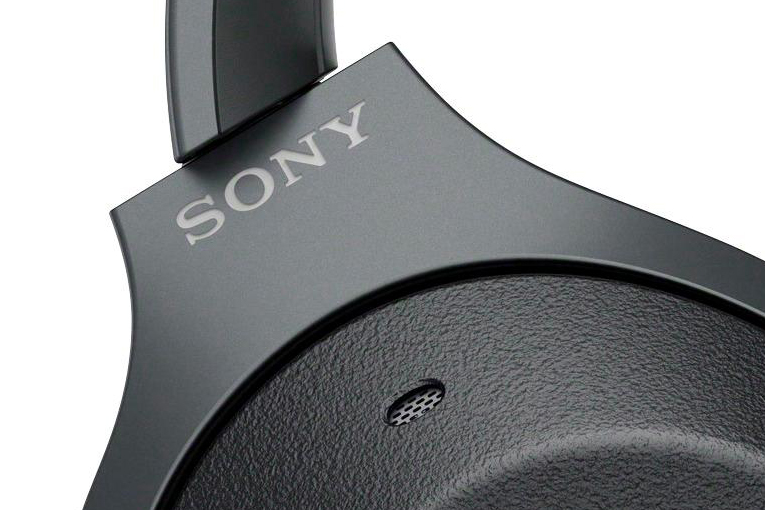
Bose vs. Sony was close to a toss-up. The QC35 IIs arguably had a more neutral and slightly more spacious sound, but their bass was a little mushy in comparison. The WH-1000XM2s had a little extra kick in the bass and treble, which made them sound more lively but didn’t make them sound tonally colored. With an apparent subtle treble boost, the WH-1000XM2s definitely brought the voices out more. I slightly preferred the Sonys with this tune, but it was close. Both sounded quite good.
“Wives and Lovers,” from Frank Sinatra and Count Basie’s It Might As Well Be Swing (256kbps MP3, Reprise), solidified my opinion of the WH-1000XM2s. The bottom notes did seem kind of boosted -- or, as Sinatra might have said, “jazzed up” -- but in a way that I think most people would like, and that didn’t sacrifice their definition. That little bit of lower-treble boost was once again evident in the voices, and once again was a welcome little twist in the tuning. This character also brought out the detail in guitarist Freddie Green’s hard-swingin’ strumming, which is usually hard to pick out in recordings of the Basie band. In comparison, the Bose QC35 IIs sounded flatter from a frequency-response standpoint, but also flat in the sense of their sound having not as much life as the WH-1000XM2s could muster -- Sinatra’s voice sounded a bit recessed and reluctant.
Conclusion
I’ve heard most of the noise-canceling headphones made in the last ten years, and the Sony WH-1000XM2s rank among the best. The only NC headphones I’ve heard that I like better are the PSB M4U 2s, but those lack Bluetooth, and for me they’re too bulky for business travel, and less comfortable than the Sonys. (A Bluetooth version, the M4U 8, was scheduled to ship shortly after I wrote this.) The biggest issue for me is the eardrum suck I get with Bose’s over-ear NC ’phones; Sony’s NC isn’t quite as good, but for me, it’s more comfortable for my ears.
It’s a tough choice, but I’d probably have to go for the Sonys.
. . . Brent Butterworth
Associated Equipment
- Sources -- Samsung Galaxy S6 smartphone, Apple iPod Touch (sixth generation)
Sony WH-1000XM2 Wireless Noise-Canceling Headphones
Price: $349.99 USD.
Warranty: One year parts and labor.
Sony
Phone: (800) 222-7669
Website: www.sony.com







